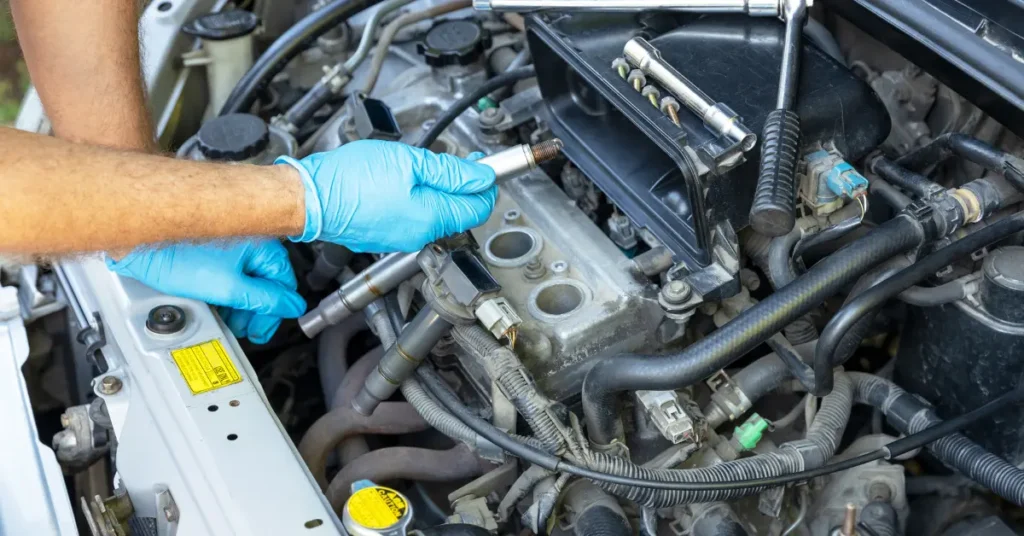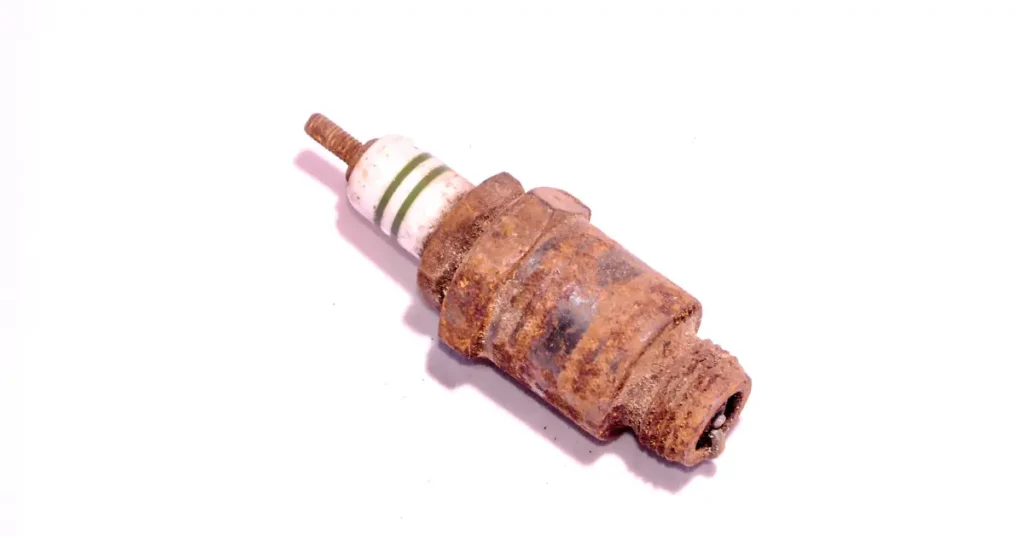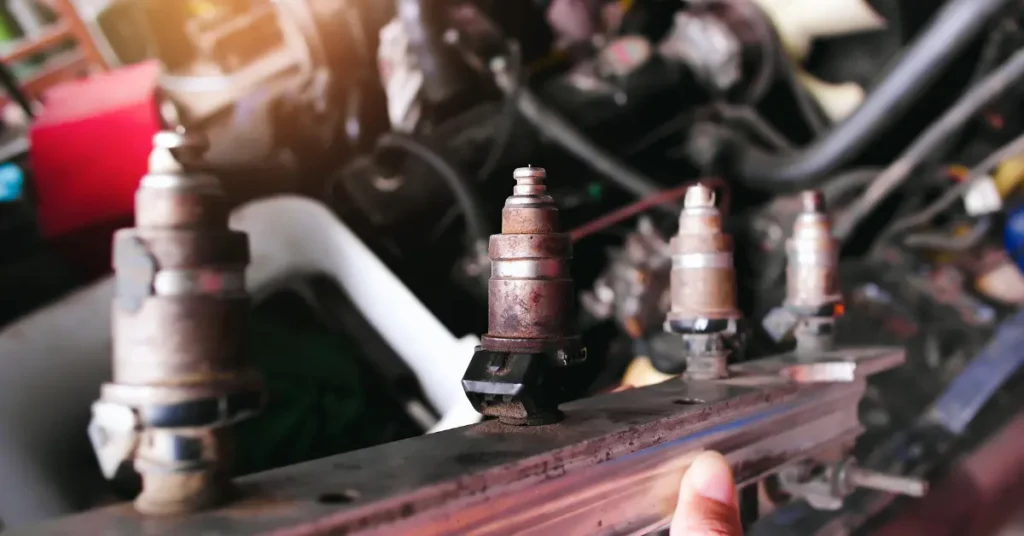
The P0300 Buick diagnostic trouble code (DTC) is a generic code related to engine misfires. When this code is triggered, it means that the engine control module (ECM) has detected multiple misfires occurring randomly in the engine’s cylinders.
While focusing on the intricacies of P0300 in Buick, acknowledging the universality of this code fosters a more comprehensive understanding.
Cars, like puzzle pieces, fit into a broader automotive landscape, each contributing to the collective knowledge of engine diagnostics.
Recognizing the similarities in how the P0300 code manifests in various models enriches our troubleshooting capabilities and equips us to tackle misfire issues holistically
Contents
Understanding Engine Misfires
Engine misfires occur when the air-fuel mixture inside the combustion chamber fails to ignite properly.
This can lead to a variety of issues, such as reduced power, rough idling, and increased fuel consumption. Ignition misfires can be caused by various factors, including faulty spark plugs, ignition coils, fuel injectors, or even a malfunctioning ECM.
Engine misfires are a common problem that can occur in any vehicle. They happen when the air-fuel mixture inside the combustion chamber fails to ignite properly.
This can be caused by a variety of factors, including worn or faulty spark plugs, faulty ignition coils, clogged fuel injectors, vacuum leaks, a malfunctioning EGR valve, or even a malfunctioning ECM.
It’s important to address engine misfires promptly, as they can lead to reduced power, rough idling, and increased fuel consumption.
To diagnose an engine misfire, it’s important to understand how the engine works. The air-fuel mixture is ignited by the spark plugs, which produce a spark to ignite the mixture. If the spark plugs are worn or faulty, they may not be able to produce a strong enough spark, resulting in a misfire.
Similarly, if the ignition coils are faulty, they may not be able to generate the necessary voltage to produce a spark.
Additionally, clogged fuel injectors can disrupt the proper flow of fuel into the combustion chamber, leading to a misfire. Vacuum leaks can also cause an imbalance in the air-fuel mixture, resulting in misfires. Finally, a malfunctioning EGR valve or ECM can also contribute to engine misfires.
Some of the symptoms may be similar in cylinder misfires so check carefully.
Symptoms of P0300 Buick
When the P0300 Buick code is present, you may experience some of the following symptoms:
Engine Misfires

You may feel a noticeable jerking or hesitation while driving, especially during acceleration. This can be quite alarming and may affect the overall performance of your vehicle.
Rough Idle
The engine may run unevenly or vibrate excessively when idling. This can make the vehicle feel unstable and may cause discomfort for both the driver and passengers.
Reduced Power
The vehicle may lack power and struggle to accelerate. This can make it difficult to merge onto highways or pass other vehicles safely.
Increased Fuel Consumption
Misfires can lead to poor fuel combustion, resulting in higher fuel consumption. This can be costly and may negatively impact your overall fuel efficiency.
It’s important to note that these symptoms may vary depending on the severity of the misfires and the specific conditions under which they occur. If you notice any of these symptoms, it’s recommended to have your vehicle inspected by a qualified technician to accurately diagnose and address the issue.
Common Causes of P0300 Buick
To accurately diagnose and fix the P0300 Buick code, it’s important to understand the potential underlying causes. Some common causes include:
Worn or Faulty Spark Plugs

Over time, spark plugs can wear out, leading to weak or inconsistent sparks. This can result in misfires. It is recommended to replace the spark plugs at regular intervals as part of routine maintenance to prevent misfires. A faulty spark plug is common in cylinder misfires.
Faulty Ignition Coils
Ignition coils play a crucial role in generating the spark needed for combustion. If a coil is malfunctioning, it can cause misfires in the engine. It is important to test the ignition coils and replace any faulty ones.
Clogged Fuel Injectors
Dirty or clogged fuel injectors can disrupt the proper flow of fuel into the combustion chamber, leading to misfires. Regular fuel injector cleaning or replacement can help prevent this issue.
Vacuum Leaks
Any leaks in the engine’s intake system can cause an imbalance in the air-fuel mixture, resulting in misfires. It is important to inspect the intake system for any signs of leaks and repair them promptly.
Faulty EGR Valve
The exhaust gas recirculation (EGR) valve helps reduce emissions by recirculating exhaust gases back into the combustion chamber. A malfunctioning EGR valve can cause misfires. If the EGR valve is found to be faulty, it should be replaced.
Malfunctioning ECM: In some cases, the ECM itself may be faulty, leading to erroneous misfire detection. If all other causes have been ruled out and the ECM is suspected to be faulty, it may need to be repaired or replaced.
It’s important to note that these are just some of the common causes of the P0300 Buick code. Proper diagnosis by a qualified technician is necessary to accurately identify the specific cause in each case.
Diagnosing the P0300 Buick Code
Proper diagnosis is crucial in order to pinpoint the exact cause of the P0300 Buick code. Here are some steps that can help in the diagnostic process:
Check for Other Trouble Codes
It’s important to determine whether there are any other codes present in addition to P0300. These additional codes can provide additional clues about the underlying issue. It is recommended to use a diagnostic scanner to retrieve all stored codes.
Inspect Spark Plugs and Ignition Coils
Remove and inspect the spark plugs for signs of wear or damage. Additionally, test the ignition coils to ensure they are functioning properly. Replace any worn or faulty spark plugs and ignition coils.
Test fuel injectors

Perform a fuel injector flow test to check for any clogs or uneven fuel distribution. Clean or replace any clogged or faulty fuel injectors.
Inspect the EGR Valve
Check the EGR valve for proper functioning and ensure it is not stuck open or closed. Replace any faulty EGR valves.
Check for vacuum leaks
Perform a thorough inspection of the engine’s intake system for any signs of vacuum leaks. Repair any identified leaks.
Perform a Compression Test
A compression test can help determine if the misfires are due to low compression in one or more cylinders. If low compression is detected, further inspection and repairs may be necessary.
It’s important to note that these diagnostic steps are just a general guideline. The specific diagnostic process may vary depending on the make and model of your vehicle.
It is recommended to consult the vehicle’s service manual or a qualified technician for detailed instructions.
Fixing the P0300 Buick Code
Once the underlying cause of the P0300 Buick code has been identified, appropriate measures can be taken to resolve the issue. Here are some common solutions:
Replace spark plugs: If the spark plugs are worn out or damaged, replacing them with new ones can often resolve the misfire issue. It is recommended to use high-quality spark plugs that are recommended for your specific vehicle.
Replace Ignition Coils
Faulty ignition coils should be replaced to ensure proper spark generation. It is important to use OEM or high-quality aftermarket ignition coils to ensure reliable performance.
Clean or Replace Fuel Injectors
If clogged or dirty fuel injectors are causing misfires, cleaning or replacing them may be necessary. It is recommended to use fuel injector cleaning kits or have a professional perform the cleaning or replacement.
Repair Vacuum Leaks
Any identified vacuum leaks should be repaired to restore the proper air-fuel mixture. Depending on the location and severity of the leaks, this may involve replacing gaskets, hoses, or other components.
Replace Faulty EGR Valve
If the EGR valve is found to be malfunctioning, it should be replaced with a new one. It is important to use a genuine or high-quality aftermarket EGR valve to ensure proper functionality and longevity.
Repair or Replace ECM
If all other causes have been ruled out and the ECM itself is determined to be faulty, it may need to be repaired or replaced. This should be done by a qualified technician with the necessary equipment and expertise.
It’s important to note that these solutions may not apply to every case of the P0300 Buick code. The specific repairs needed will depend on the underlying cause identified during the diagnostic process.
Conclusion
The P0300 Buick code indicates multiple engine misfires and should not be ignored. Prompt diagnosis and appropriate repairs are essential to prevent further engine damage and restore the vehicle’s performance.
If you are not experienced in automotive diagnostics and repairs, it is recommended to consult a qualified technician to accurately diagnose and fix the issue.
FAQ
Q1: What does the P0300 Buick code indicate?
The P0300 Buick code indicates multiple engine misfires occurring randomly in the engine’s cylinders.
Q2: What are the symptoms of P0300 Buick?
The symptoms of P0300 Buick may include engine misfires, rough idle, reduced power, and increased fuel consumption.
Q3: What are some common causes of P0300 Buick?
Some common causes of P0300 Buick include worn or faulty spark plugs, faulty ignition coils, clogged fuel injectors, vacuum leaks, faulty EGR valves, and malfunctioning ECM.
Q4: How can the P0300 Buick code be diagnosed?
The P0300 Buick code can be diagnosed by checking for other trouble codes, inspecting spark plugs and ignition coils, testing fuel injectors, inspecting the EGR valve, checking for vacuum leaks, and performing a compression test.



